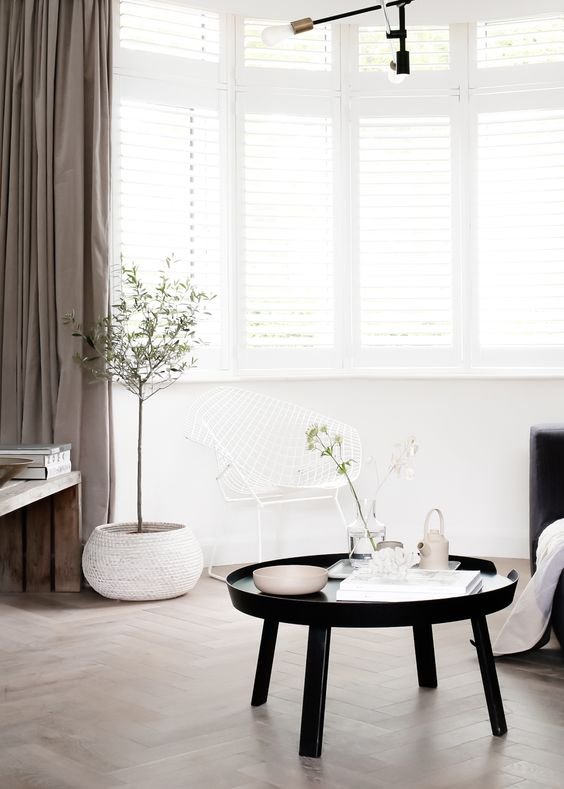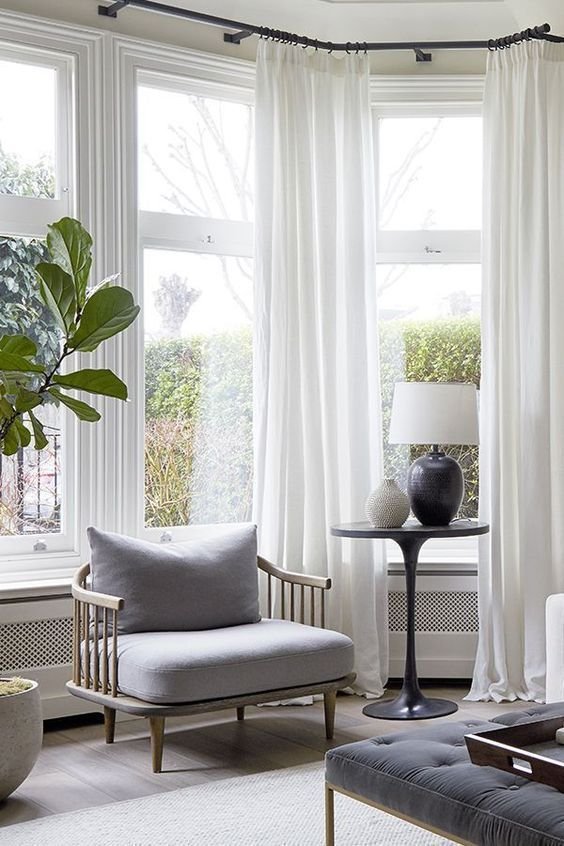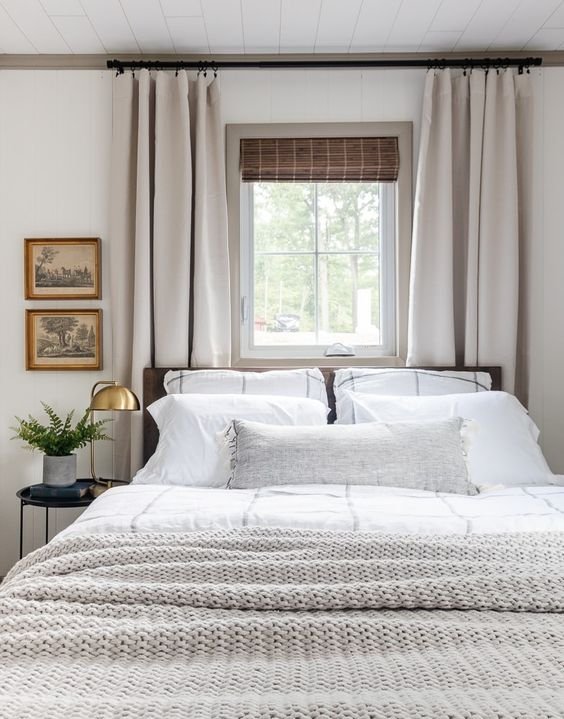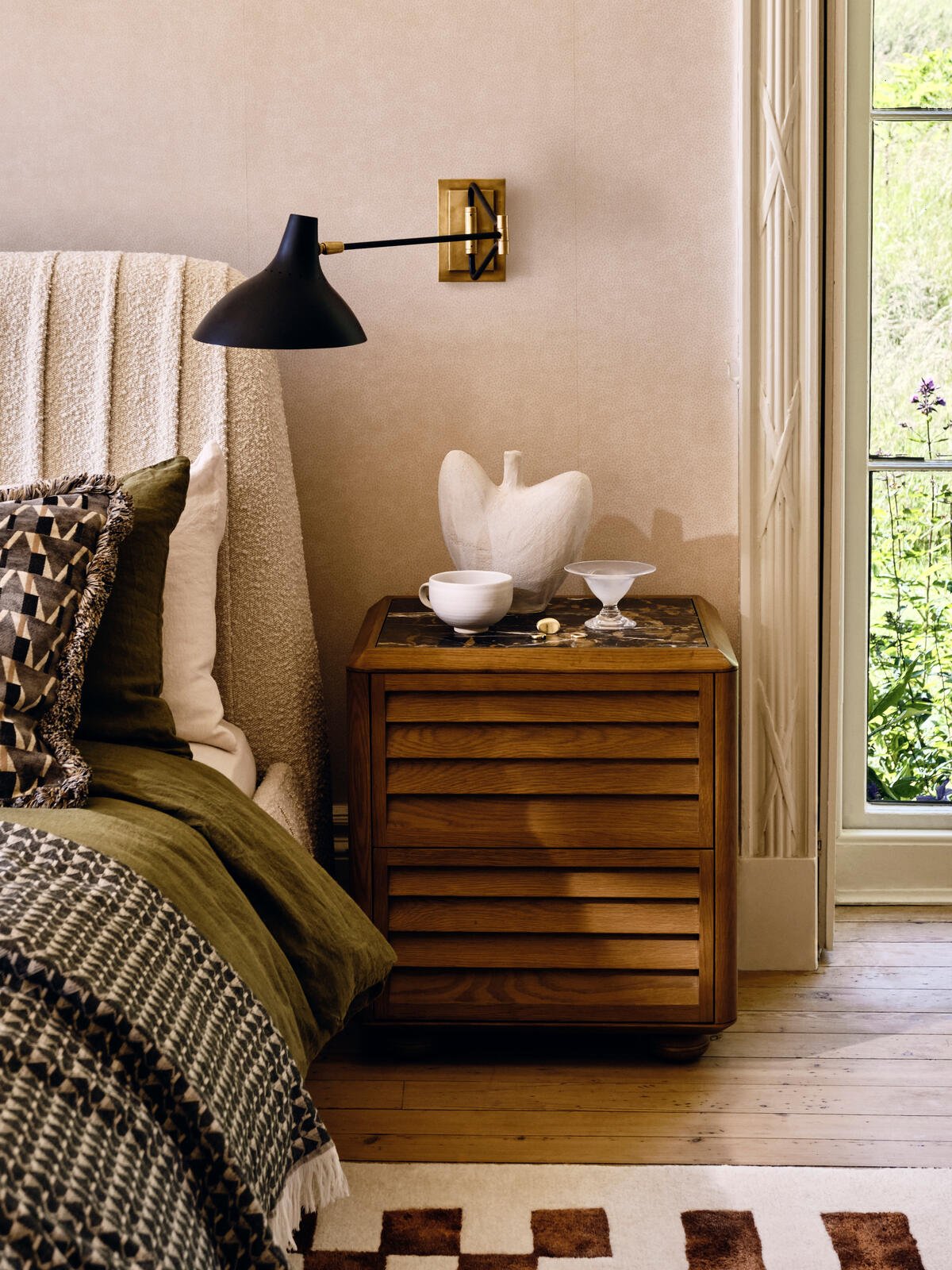How to choose window dressings
Window dressings (i.e. curtains, blinds, shutters, etc) are the finishing touches of interior design. This House Beautiful article describes them as the “jackets of interior design” - they are the last thing you add to your outfit but they can make or break a look, or dress an outfit up or down.
Source: Style by Emily Henderson
Here’s some advice to help you make the right choice when selecting window dressings for your space.
What is the room’s function?
As with most decisions in interior design, the first question to ask yourself is “what do I do in the room?” - the answer should help you work out what the most appropriate window dressing to choose.
For example, in a kitchen, floor length curtains might not be the right idea as they’ll get dirty from all the coming and going. Likewise, above a hob or sink in a kitchen you might not want to go for drapes as they might absorb smells or grease from cooking or splashes.
How much privacy do you require in the room and how often will you want to shut the blinds or curtains - is it a bathroom or a bedroom? How much moisture is in the air - if you enjoy very long hot showers then maybe fabric roman blinds in the bathroom aren’t the right idea.
Source: Hydrangea Treehouse
How much light does the room get?
This is an important one to consider, because the last thing you want to do is make a dark room even darker by blocking out the natural light.
Shutters block out a lot of light, so they should be reserved for rooms which get a huge amount of natural light and can cope with a solid structure in front of the windows.
Depending on the header type, curtain stack back (the width of the curtains when they’re in the open position) can be up to 30% of their closed width, meaning that they can potentially block a large portion of your window. So if your window is smaller you might want to consider a curtain header which has a minimum stack back, or go for a sheer fabric.
Roller blinds and roman blinds will block out the least light when open.
Source: Design Hunter
How much space do you have?
If there’s a piece of furniture up against the window, you might find it difficult to access the space to manually close curtains. In that scenario you might want to opt for a corded curtain track which allows you to open and close curtains from the side, or a blind with a cord on the side.
When space is limited, think about whether your window dressings will reach the floor - heavy curtains might not be appropriate if you only have a narrow amount of space as they might make it feel even smaller.
Source: Spiffy Spools
Light and temperature requirements
If the room suffers from extremes of temperatures, then a thermal lining on a blind or curtain could help mitigate. Thermal lining isn’t just for keeping the warmth in on a cold day, if the lining is light in colour then it will also reflect the sun and stop it from heating your room.
Similarly, if you require the room to be pitch black - for example in a bedroom or a TV snug, then blackout lining on blinds or curtains is an effective way of achieving this. Just make sure that they’re mounted overlapping the window by about 15cm on all sides, to stop the light filtering through.
Source: The Lilypad Cottage
Get the aesthetic right
The choice of window covering or the fabric you use can make a huge impact on a space. Going back to the jacket example above - adding a blazer to jeans will make it more formal, or a leather jacket to a ballgown will give it an edge. The same concept applies to window dressings.
Curtains with pleats and pelmets will add a formal look, whereas tab tops or gathers offer a more relaxed style. For blinds and curtains, velvet and silk are luxurious, whereas linen or linen blend can be used for a more casual look. Shutters tend to suit both modern and traditional styles.
Source: Att Pynta
Think about layering
Layering your window dressings is a nice way to add some extra depth and texture into a room - for example layering sheer drapes together for a light and breezy living room, or a roman blind underneath a curtain for a cosy bedroom.
Layering your window dressings also gives you options for how much light you want to filter - for example if you had black out roman blinds plus sheer curtains in a bedroom, you could draw the sheer curtains for privacy whilst allowing the light in during the daytime, and then use the blackout blinds at night for sleeping.
Source: Amy Peters
Budget
And finally, something to consider is your budget - window dressings can be a lot more expensive than you’d think and can vary based on the size and quantity of the windows in a room.
Generally speaking, the more fabric required, the more expensive. Curtains (which I advise hanging to the floor, always) require a lot of fabric, especially if you choose a pleated heading, so they are often on the pricier side. Shutters are expensive as they require having someone visit your home to measure and fit.
Roman blinds require less fabric as they just cover the window and don’t need pleating, so they are a cheaper option. Roller blinds and window film are the cheapest option but are the less effective at blocking out light or regulating temperature, and they don’t often add much to the aesthetic of a room.
Source: Lustalux
If you’d like my help with your next project, check out my services to see how we can work together. If you’ve enjoyed this blog, don’t forget to subscribe below to receive my new post in your inbox every Sunday.



















